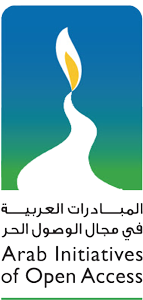Hepi paper says access could be based on having UK IP address
The government should consider negotiating a national licence with publishers that would give access to academic research to anyone with a UK internet connection.
That is the proposal floated in a Higher Education Policy Institute “occasional paper”, launched on 31 March, entitled
“Open access: is a national licence the answer? and written by David Price, vice-provost for research at University College London, and Sarah Chaytor, head of public policy in his office.
The idea of a national licence was dismissed in a single paragraph in 2012’s landmark
Finch Report into open access.
Noting that Iceland was the only country to have adopted such a scheme, it said a UK version was “unlikely to be practicable, and the costs would probably be high”. The report’s alternative recommendation for the UK to steer a course towards universal journal-provided gold open access was accepted by the government and funders.
The Hepi paper acknowledges that some progress has been made in that direction. But it says gold open access only opens access to the 6 per cent of global papers produced in the UK, while “there is no reciprocal offering from most other countries, including those who rival or exceed our own performance in research. This is having a negative impact on British competitiveness.”
The Finch Report was the inspiration for the
Access to Research initiative, which makes papers hidden behind a pay wall freely accessible via terminals in UK public libraries.
But the Hepi report – launched at a conference on the research excellence framework held at the Royal Society – says potential users of research from outside the academy, such as small businesses, policymakers, doctors and teachers still “find it hard to gain access. In an age when…90 per cent of the population are online, such constraints seem out of date”.
The negotiation of a national licence with publishers, by a “government-approved body”, would greatly improve UK access to global research, “driving innovation and the knowledge economy”.
In additional to the research and funding councils, contributions to the cost could come from the knowledge transfer budget, the NHS and business.
“We would not, however, wish to pretend that a national licence offers a simple solution to reduce the public funding commitment significantly from current levels or that cost savings are the main reason to consider its introduction,” the report cautions.
They envisage the scheme running alongside the continued payment of article processing charges during the “transition towards gold open access” – although the charges could be “offset against the national licence in the way they are now beginning to be offset against subscriptions”.
The authors admit there are a number of potential obstacles, such as competition law, the difficulty of confining access to UK IP addresses and the potential refusal of some publishers to take part.
They call on the government to set up a “high-level expert working group with representatives of all the key stakeholders” to explore such issues and carry out a detailed economic impact assessment.
Professor Price, said: “There is no doubt that negotiating a national licence would involve reconciling a great many diverse interests. However, the prize at stake – bringing cutting-edge research to bear on every aspect of life in the UK – is of such significance that we must collectively pursue it.”

![Enabling an open education future with EPrints [Image: opensource.com via Flickr CC BY-SA]](http://www.eprints.org/uk/education/eprint-open-education.jpg)








2057-4347/asset/cover.gif?v=1&s=1411e243d177a2ab06fe675183c9fa10500e025d)

